

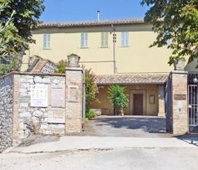
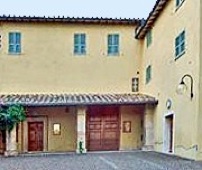
This site was given to St Sylvester Guzzolini in 1267 and became the site of the Sylvestrine monastery of San Benedetto. The monks moved to Santa Maria di Porta Sole (later Santa Maria Nuova) ca. 1293.
The complex then passed to a community of Sylvestrine nuns. They moved to San Benedetto dei Condotti in 1641 because of the military threat during the War of Castro.
Bishop Marcantonio Oddi acquired complex in 1657. He translated the relics of St Erminius from the catacombs of Rome, to his church in 1662. Although nothing is known of the life and martyrdom of this saint, Pope Clement XIII (1753-69) authorised his cult in Perugia and the celebration of his feast on 24th April. He also modified the church, which was re-dedicated as Sant’ Erminio.
The nuns from Santa Maria di Monteluce took over the complex in 1927, when their convent in Piazza di Monteluce was commandeered for the hospital.
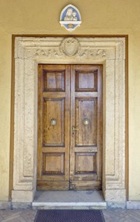
Interior
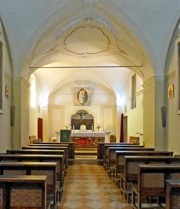
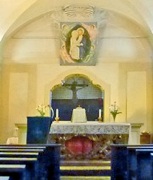
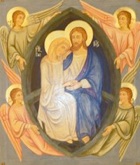
Crucifixion (late 15th century)

Art from the Complex
Panels from a Polyptych (15th century)
These panels came from a polyptych in the Sylvestrine nuns here. The central panel of the Madonna and Child with two kneeling angels is signed “Petri Urbevetere opus” (the work of Peter of Orvieto, usually identified as Pietro di Nicola Baroni). The other surviving panels are:
-
✴two side panels depicting:
-
•St Benedict, with a smaller figure of a kneeling monk (presumably the donor) in front of him; and
-
•St Jerome, with his lion and cardinal’s hat;
-
✴three cusp panels depicting:
-
•God the Father, above the central panel; and
-
•the figures of the Annunciation; and
-
✴three predella panels, depicting:
-
•SS Benedict, Maurus and Placidus;
-
•the Pietà (at the centre); and
-
•St Sylvester Gozzolini (the founder of the Sylvestrine Congregation) saving a monk.
The panels passed to the Oddi family, presumably when they acquired the premises of the nunnery in 1641. They are now in the Museum of Western and Oriental Art, Kiev, and are illustrated in the site of the Fondazione Federico Zeri.

